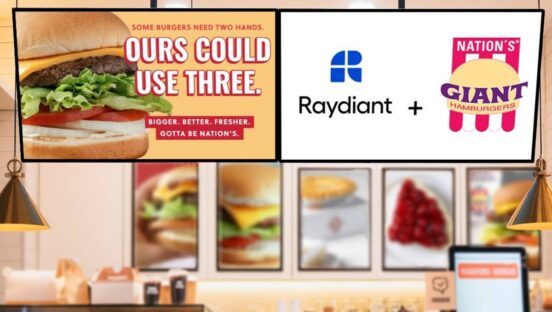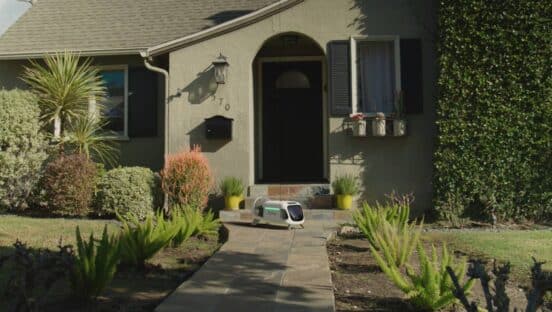There is a wealth of data available to restaurateurs. That’s the easy part. Where do you really look, though, when the information pours in? Quick-service customers are perhaps best targeted by convenience. At least that’s the story today (it might change tomorrow). They want a frictionless experience across all access points, from payment options outside the restaurant to inside the four walls. That includes drive thrus, kiosks, cashiers, parking lots, and living rooms.
With all of this data, however, comes a new-age set of issues. Security. Segmentation. Understanding the leverage of one-to-one marketing and digital promotions for a changing guest. Loyalty and rewards are a huge part of this, of course. But there is a give-and-take with sign-ups that restaurants must honor. If trust is broken, it could be near impossible to reap the vast benefits, trial, and repeat usage of a locked-in customer.
Andrew Robbins, the president and co-founder of Paytronix, took some time to chat with QSR about the changing landscape of data, loyalty, payments, and everything in between.
One of the biggest changes in today’s industry is the rise of big data. Why is data so important?
For a restaurant to survive today, the need to provide a frictionless guest experience that gathers rich customer data is critical. One key way to drive a frictionless experience for restaurants is with NFC payments. For example, when Amazon came out with the one-click purchase, this offered ease and convenience previously missing from the online shopping experience. Restaurants need to be thinking the same way. With Apple and Google Pay integrated with NFC Loyalty, customers have their payment and loyalty info in one place and can quickly check out every time they’re at a restaurant. In fact, guests with NFC loyalty visit restaurants 60 percent more frequently than the average person and are about 5 years younger—customers restaurants definitely want to keep.
Talk about convenience. Everyone agrees this is the key for quick-serves, but how can brands really use it to inspire repeat visits?
As I briefly mentioned earlier, one major area that really facilitates convenience is NFC payments. It creates a personalized experience for customers while providing a seamless transaction for both the cashier and the guest with one simple phone tap—a key metric for quick-service and fast-casual chains. Specifically, for the customer, it brings loyalty functionality into Apple Pay and Google Pay, which means one less app they have to navigate at check-out, greatly improving their ease-of-use. This will lead to greater adoption while also providing marketers with additional data to improve the program effectiveness. Any improvements such as this that can positively impact the consumer, store operations and marketing is a winning situation that will keep guests coming back.
Some of the convenience benefits that NFC payments bring to restaurants, retailers and end users include:
Convenient Guest ID. With the NFC Apple Pay and Google Pay integration, guests tap their phones not only pay, but also deliver their loyalty identifier and redeem rewards.
Easy Reward Redemption. Automatic calculations of progress to rewards and real-time reward redemption.
More Active Users. Easy identification, payment, and redemption leads to more active users, a broader, richer individualized guest purchase data set, and the ability for the merchant to drive incremental revenue with targeted offers.
Secure Transactions. When a credit or debit card is used with Apple Pay, the actual card numbers are not stored on the device, nor on Apple servers. Instead, each transaction is authorized with a one-time, unique, dynamic security code.
Fast Line Speed. One-tap for payment and loyalty means faster line speeds in restaurant locations. In stores, Apple Pay works with iPhone SE, iPhone 6 and later, and Apple Watch.
What is the key to guest loyalty in today’s industry, with this millennials and Gen Z?
Millennials love to collaborate. After all, they are largely responsible for the pervasive crowd-sourcing trend, which features reviews of restaurants and hotels, traffic updates, and ride sharing. Restaurants that want to tap into the millennial customer set need to think about collaboration.
Shareability is also an important element for restaurants’ millennial customers. Millennials were the first to grow up with the Internet and email and share everything from selfies and pictures of their meals to videos of their pets on social media. Restaurants can capture attention by creating content that is useful, entertaining, and of course, shareable.
Millennials are also known to be the most adventurous, often opting to seek out new experiences rather than making expensive purchases. A restaurant that offers an out of the box experience can help millennials satisfy their urge for unique adventures while also fulfilling their need for nourishment.
Gen Z is more focused on competition. They understand the importance of hard work and are willing to put in the effort to obtain the prize. Restaurants that incorporate healthy competition into their programs will pique the interest of Gen Z customers.
Millennials appear happy to post on social media and share information in general, but Gen Z won’t share data with brands without knowing that it will be secure. Restaurants can encourage Gen Z customers to share their information by allaying these concerns and making the benefits clear.
Gen Z also seems to be more concerned about social issues and equality. Not every restaurant or brand needs to take a social stance, but those that do—and those that take action based on their stance—can likely expect increased loyalty and visits from Gen Z.
What are some ways to unlock sales and drive loyalty, such as through successful catering programs?
Because the nature of catering is different from individual loyalty programs, it’s necessary to develop a separate rewards program for your catering business. If you have a rewards program for individual orders where for every ten orders you get one free, applying that to catering might result in a free order worth hundreds of dollars, revenue you don’t want to miss out on. Here are a few ways you can use a catering rewards program to drive loyalty:
Offers for First Time Orders: The first time a catering customer places an order is the first opportunity to make a fantastic first impression. Experts caution against giving discounts in this situation as it devalues your product from the very start of your relationship, but instead suggest providing a small dish for free, for example, a plate of cookies. The margins in catering tend to provide enough cushion where there is room for something like this—and if your cookies are amazing, it could be something that customers choose to add on to future orders.
After the First Order: After you deliver a great experience to your first-time customer, why not ask them for their business again while your restaurant is fresh in their memory? Offering a quick turnaround promotion for catering orders placed within a certain time from their initial order could help to get you on a catering customer’s regular rotation.
Points per dollar or per order: One idea around catering rewards is to offer a point system based on either dollar amount or order frequency and then to allow customers to cash in their points for different items. A certain number of points could be required to earn a free dessert, or an appetizer. Other catering rewards programs let you redeem points for money off your next order or for gift cards. Taking a critical look at your customer data is necessary to know what type of rewards your restaurant should offer.
Rewards for the Order Placer: Often in catering, the person placing the order is doing so on behalf of a business and may not be eating any of the catered meal. Some catering rewards programs allow a small number of points to be redeemed for an individual entrée in addition to any catering rewards as a way to reward the person who places the order and to maintain that relationship.
Much like other guests, it’s important to know as much possible about catering customers as well. Knowing the order cadence for each guest so that you can accurately target your lapsed catering customers with promotions and incentives is just as important as in any other piece of your marketing campaigns.
Furthermore, measuring your performance is necessary to know if your efforts are working and what areas need to be targeted for improvement. Some metrics to look at are:
Repeat Customers: If they aren’t choosing to book you for catering again, you’ve either failed to make that first experience memorable or perhaps your sales team didn’t follow up as well as they should have.
Rewards Enrollment: How many of your catering customers are signing up for your catering rewards program? If they are repeat customers but are not enrolled, it may be either a communication problem or a value problem. Make sure that these customers know about the rewards, that you’ve made the enrollment process as easy as possible and that the rewards are things that appeal to them.
These tips will help build a catering rewards program that highlights the unique aspects of the catering business and provides a boost to a restaurant’s revenue.












